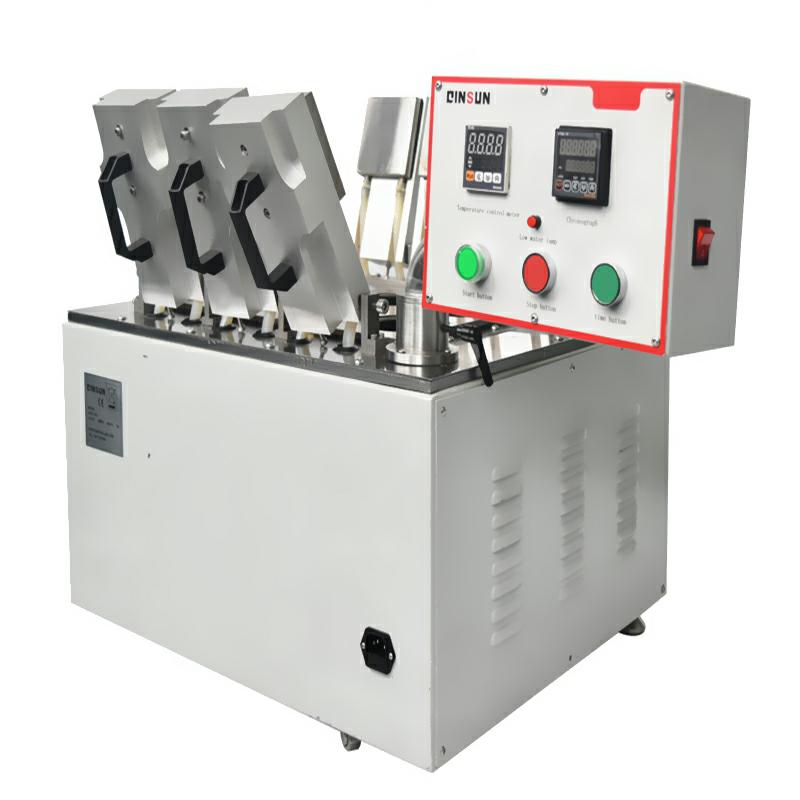Atomization Tester
The fogging tester is one of the VOC detection instruments in the automotive interior industry. It is mainly used to evaluate the evaporation of volatile components of interior materials such as automobiles and aircraft, such as automobile interior plastics, polyurethane, textiles, leather, adhesives, non-woven fabrics, thermoplastic elastomers, etc. at high temperatures. It can also be used to measure the high-temperature fogging phenomenon of vehicle front xenon lamps.
Maintenance Practices to Avoid
First, let's discuss nebulizer maintenance practices that should be avoided to prevent damage.
Do not insert anything, including wires and probes, through the nebulizer orifice. This will likely damage the nebulizer beyond repair.
Never touch the nebulizer tip; any deposits of body oils will adversely affect nebulizer performance.
Do not use any concentration of HF to clean glass or quartz nebulizers. Even diluted HF can alter the orifice of the internal capillary and degrade nebulizer performance.
Do not place a glass nebulizer in an ultrasonic cleaner, as this may damage the internal capillary.
Do not use hot liquids to flush the sample capillary of an inert nebulizer (PFA or PTFE). High temperatures may deform the capillary and affect nebulizer performance.
Maintenance of the Atomization Tester
1. Use the power supply indicated on the product nameplate and ensure proper grounding. Do not mix or connect the neutral and ground wires. Avoid using the same line with high-power instruments. Do not operate in environments subject to severe vibration or strong electromagnetic interference.
2. The heating oil in the main unit should only be heated to a maximum of 150°C. Heating above 150°C is strictly prohibited.
3. The ambient temperature in the room where the instrument is located should be at least 0°C. The heating oil becomes viscous as the temperature drops, impairing heat transfer. The distilled water in the temperature control unit will freeze at 0°C and will not circulate. Do not operate in environments with temperatures exceeding 30°C and relative humidity exceeding 60%.
4. When the water tank in the temperature control unit is filled with distilled water, the temperature should only be set between 5°C and 80°C to avoid boiling and freezing. The water tank in the temperature control unit needs to be refilled with distilled water, and it is recommended to replace the distilled water every two months.
5. Never operate the instrument unless there is no liquid in the main unit or temperature control device tanks. Doing so may damage the instrument.
6. Do not activate the "Cooling" button if the temperature of the liquid in the tank is above 45°C.
7. The final measurement result of the tester is the glossiness of the glass plate and the weight of the aluminum foil. Therefore, it is strictly forbidden to touch the cleaned glass plate or the aluminum foil with bare hands.
8. The cleaning process for accessories must be carried out strictly according to the operating procedures to avoid affecting the test results.
9. After the test, the glass plate and aluminum foil must not be exposed to sunlight or wind.
10. After the test, the power must be disconnected.
11. Keep the machine clean. When not in use for testing, the cover should be securely attached and the entire machine covered with a dustproof sheet.
12. Operators may perform routine maintenance and troubleshooting, provided they are familiar with the user manual and electrical principles, and with the cooperation of the manufacturer's maintenance personnel. Unauthorized disassembly of the machine is strictly prohibited. When factory personnel inspect and repair instruments, they must first turn off the power supply and are strictly prohibited from operating with power on.
Proper nebulizer care, combined with regular maintenance, will help maintain optimal nebulizer performance and extend its lifespan, thereby reducing your laboratory's nebulizer replacement costs. Establishing daily nebulizer performance checks and being able to quickly identify nebulizer-related ICP performance issues will significantly reduce instrument downtime. Accessories such as the Eluo, Guardian inline filters, and TruFlo can greatly improve and simplify routine nebulizer maintenance tasks while also protecting critical inlet system components in ICP.



 在线客服
在线客服